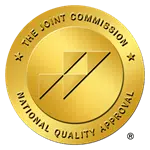Although its usage in psychotherapy dates back to the 1970s, by the 1980s, MDMA had gained widespread popularity as an illegal recreational drug, particularly in club culture. However, it has since surpassed these boundaries and now impacts a broader group of individuals who frequently refer to the substance as Ecstasy or Molly. In recent years, however, MDMA addiction has taken a complex turn, affecting both adults and adolescents alike. Why do people continue to use Molly, and what are the consequences? Here is what you need to know.
What Is Molly?
Molly is a popular street term for a synthetic, psychoactive, and illegal drug called MDMA (3,4-Methylenedioxymethamphetamine). This substance possesses the unique ability to function as both a stimulant and a hallucinogen, resulting in a captivating combination of effects. It has the power to energize the mind and body while also inducing distortions in one’s perception of time and reality. Furthermore, it heightens the pleasure derived from physical touch, creating an enhanced sensory experience.
Adolescents and young adults often turn to Molly as a means to lessen inhibitions, heighten emotions, and experience a state of euphoria in social settings.
How Does Molly Work?
MDMA exerts its influence on the brain by enhancing the activity of three key neurotransmitters: serotonin, dopamine, and norepinephrine. The mood-elevating effects that individuals experience from MDMA are believed to be a result of the excessive release of serotonin.
However, since MDMA causes a significant amount of serotonin to be released, it can cause the brain to become severely depleted of it. As a result, users may experience unfavorable psychological effects for many days after using the drug.
Why Is It Called “Molly”?
“Molly,” derived from “molecular,” emerged as a rebranded version of Ecstasy during the 2000s. This strategic shift was prompted by the tarnished image of Ecstasy, primarily attributed to its impurity.
Molly vs. Ecstasy
Molly and Ecstasy are commonly mistaken as distinct substances, but in reality, they both refer to the same chemical compound known as MDMA. Nevertheless, it is worth noting that there are subtle distinctions between these two drugs.
Molly refers to the crystal powder form of MDMA, often sold in capsule form and taken orally. Ecstasy is commonly used to describe the drug in its pressed tablet form.
It is a common misconception among individuals that Molly is a “cleaner” variant of MDMA. However, extensive tests conducted by the Drug Enforcement Administration (DEA) on confiscated samples of Molly and Ecstasy have revealed that both substances are frequently contaminated with various other compounds. In some cases, these substances may not even contain any MDMA at all.
How Long Does Molly Take to Kick In?
The impact of MDMA can endure for several hours, offering an altered state of mind that usually commences within a timeframe of 30 minutes to an hour following ingestion. After feeling the initial effects of Molly, you can generally expect them to continue between 3 to 6 hours. However, certain factors can affect this, such as the amount or frequency of the dose, as well as the presence of other substances. There are also individual factors to keep in mind.
Some people who use MDMA may continue to feel its aftereffects for up to a week or even longer after the drug’s effects have worn off.
Side-Effects of Taking Molly
Other possible side effects of MDMA use include muscle tension in the jaw and face, restlessness in the legs and arms, and a sense of detachment from oneself. Other symptoms include nausea, hot flashes or chills, head pain, sweating, and joint or muscle pain.
Hours after using MDMA, one’s capacity to perceive and anticipate motion, such as when driving a vehicle, is significantly impaired.
When MDMA is digested, it is broken down into byproducts that compete with the body’s capacity to metabolize the substance. Because of this, taking MDMA in excessive quantities might also result in dangerously high blood levels.
All of these side effects may be amplified when MDMA addiction is coupled with misuse of other substances.
How Long Does Molly Stay in Your System?
The presence of Molly can be detected in your body for varying durations, typically ranging from approximately two days to three months, depending on the specific type of drug test employed. The reason for this variation is that various drug testing methods possess distinct detection windows. Furthermore, the absorption and breakdown of a drug in the body are determined by various factors unique to each individual.
The detection windows are as follows:
- Urine: up to three days after ingestion
- Blood: around one to two days after ingestion
- Saliva: one to two days after ingestion
- Hair: up to around three months
MDMA Addiction: Is Molly Addictive?
The question of whether MDMA is addictive remains inconclusive in scientific research despite its impact on various neurotransmitters in the brain that are also influenced by other addictive substances. Nevertheless, it is worth noting that certain individuals who have engaged in the consumption of this drug have reported experiencing signs of MDMA addiction.
These include the development of tolerance for the substance, desire or cravings, withdrawal symptoms, and persistent usage despite adverse physical or psychological effects.
Regardless of the substance involved, it is important to seek professional treatment for any type of substance addiction.
Can You Overdose on Molly?
In large doses, MDMA can cause serious health problems or even death. A toxic overdose of MDMA happens when the body is unable to eliminate the substance after it has been consumed. Mixing Molly with alcohol or other substances raises the risk of overdose.
Just one time of using Molly may be lethal if too much is taken. With this in mind, education about MDMA addiction and the risks associated with the substance is crucial.
Ecstasy, Molly, or MDMA overdose symptoms include:
- Loss of consciousness
- Faintness or dizziness
- High blood pressure
- Panic attacks
- Seizures
Where to Seek Treatment for Molly or MDMA Addiction in Los Angeles, CA
If you are seeking a reliable and impactful treatment program for MDMA addiction, The Encino Detox Center is here to offer you an optimal atmosphere to support your journey toward recovery from substance abuse. Our dedicated team is fully prepared to assist you in finding the most suitable treatment options tailored to your specific needs.
If you are interested in obtaining additional information about rehabilitation options for MDMA addiction in your area, we encourage you to reach out to us today.


















